
 |
Harrison Eiteljorg, II
In the last issue of the CSA Newsletter was another article in the irregular series concerning slide scanning ( "Scanning 35 mm. Slides in the Office -- First-Rate Results Now Possible," Harrison Eiteljorg, II, XVIII, 1 [Spring, 2005]: http://csanet.org/newsletter/spring05/nls0506.html). Various scans were compared, and the new slide scanner used by CSA, a Konica Minolta DimageTM Elite 5400 II, was found to produce the kind of excellent results needed. However, no scans were made without the use of Digital ICETM technology, which eliminates spots from specs of dust and other debris remaining on slides after cleaning. (Digital ICE technology enables the scanner to identify physical imperfections on a slide as opposed to optical artifacts in the emulsion. When identified, the physical imperfections can be eliminated in the scanning process.) I scanned only with Digital ICE selected despite the fact that it has been claimed that the use of Digital ICE reduces sharpness. The omission nagged at me, and I decided that I needed to make a comparable scan without Digital ICE. I have since learned that Digital ICE is not recommended for use with Kodachrome, and the test slide was, indeed, a Kodachrome slide. Indeed, so are nearly all of my slides, making the new test - and a follow-on test of an Ektachrome slide - necessary.1 (A note has been appended to the previous article to suggest that readers also look at this report.)
I cleaned the test slide carefully again2 and scanned it at the highest resolution, 5400 d.p.i., but with Digital ICE not selected; I also re-scanned the slide using Digital ICE.
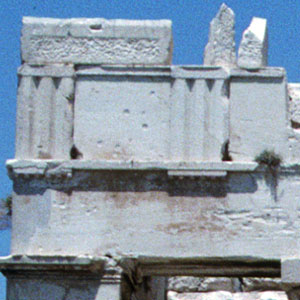 | ||
Luna Imaging detail, after auto-level command in PhotoShop, at one-pixel-per-dot resolution. Approximate scan resolution 2,000 d.p.i. |
||
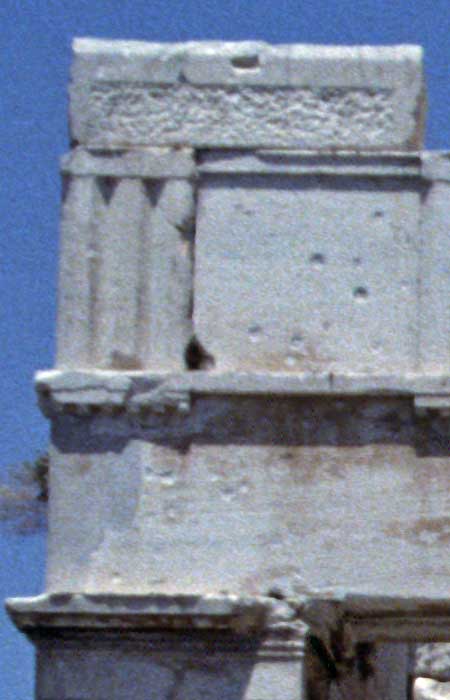 |
 |
|
CSA-Scanned image detail, using Digital ICE at 5400 d.p.i. and after adjustment in PhotoShop, at one-pixel-per-dot resolution. |
CSA-Scanned image detail, without Digital ICE, at 5400 d.p.i. and after adjustment in PhotoShop, at one-pixel-per-dot resolution. |
|
 |
 |
|
CSA-Scanned image detail, using Digital ICE, at 2700 d.p.i. and after adjustment in PhotoShop, at one-pixel-per-dot resolution. |
CSA-Scanned image detail, without Digital ICE, at 2700 d.p.i. and after adjustment in PhotoShop, at one-pixel-per-dot resolution. |
 |
|
Luna Imaging detail, after auto-level command in PhotoShop, at one-pixel-per-dot resolution. Approximate scan resolution 2,000 d.p.i. |
|
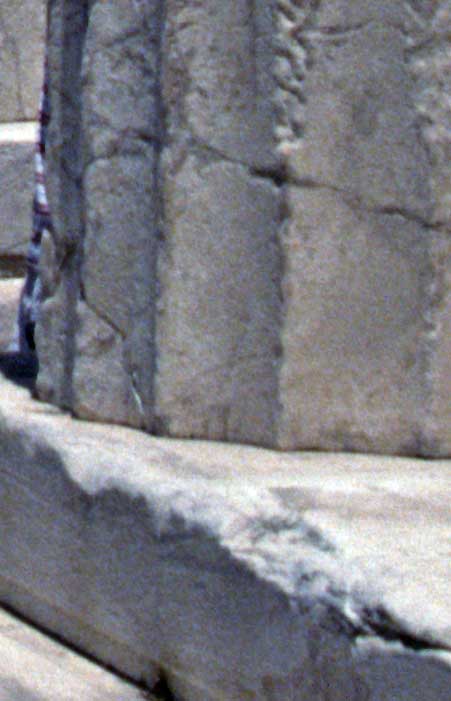 |
 |
CSA-Scanned image detail, using Digital ICE at 5400 d.p.i. and after adjustment in PhotoShop, at one-pixel-per-dot resolution. |
CSA-Scanned image detail, without Digital ICE, at 5400 d.p.i. and after adjustment in PhotoShop, at one-pixel-per-dot resolution. |
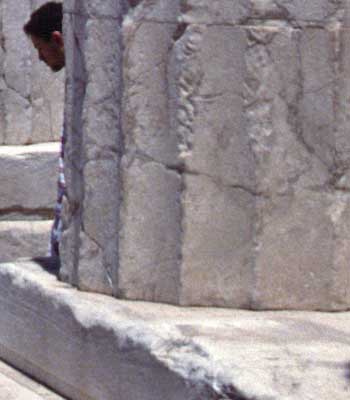 |
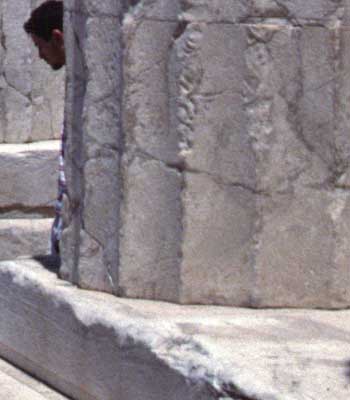 |
CSA-Scanned image detail, using Digital ICE at 2700 d.p.i. and after adjustment in PhotoShop, at one-pixel-per-dot resolution. |
CSA-Scanned image detail, without Digital ICE, at 2700 d.p.i. and after adjustment in PhotoShop, at one-pixel-per-dot resolution. |
When I first made images for comparisons, I made precisely the same adjustments to the images made with Digital ICE and without -- not simply using the same processes, but setting the adjustments numerically so that they were truly identical. That produced images that seemed to be better when Digital Ice was not used. However, I discovered that, using with the best image I could create from a scan made without Digital ICE as a guide, I could match the image with the one made with Digital ICE by applying different levels of the same PhotoShop adjustments. Making all the above images in that way, I created a group of images that, to my eye, show no advantages for avoiding Digital ICE in terms of sharpness and retained detail - and images that look better than those in the previous Newsletter article. (This conclusion makes the warning about the use of Digital ICE seem not only unnecessary but misleading. Digital ICE may cause problems with Kodachrome slides in some limited circumstances, but it is generally a very useful tool.)
As scanners resolve finer and finer details, it is difficult to determine the point of diminishing returns. Indeed, the difference between the 2700 d.p.i. scans and the 5400 d.p.i. scans is slight. I do believe that I can see added detail. At the same time, though, I am clearly seeing film grain in the sky areas of the 5400 d.p.i. scans and in some other areas that are very uniform in color; so I do not expect more useful results from higher-resolution scanners. (Kodachrome, being the finest-grained of Kodak's slide films, should not show grain easily. It shows here only in the sky and the stone surfaces with very uniform color. Grain was not apparent in the scans of the coarser-grained Ektachrome slide, but there were no similar areas of uniform color.)
Since Digital ICE was not intended for use on Kodachrome, one more experiment was obviously needed, and I dutifully located an Ektachrome slide to use for a test with and without Digital ICE. A slide from my work on the older propylon in 1975 was chosen. As in previous experiments, two portions of the slide are shown at full resolution here, as well as lower-resolution versions of the entire slide.
The full scans at reduced resolution:
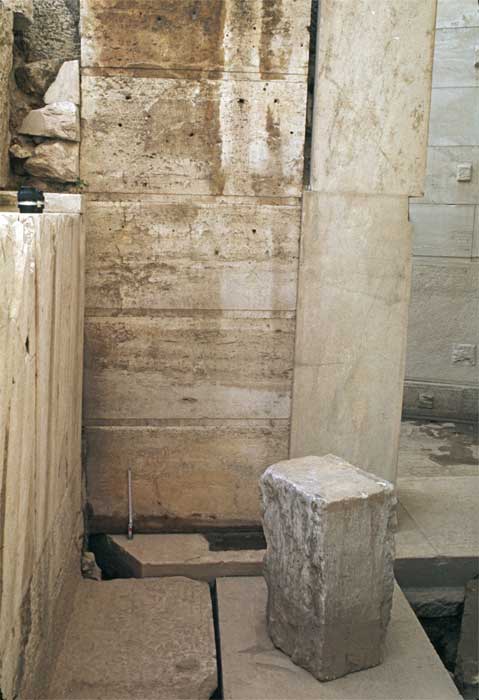 |
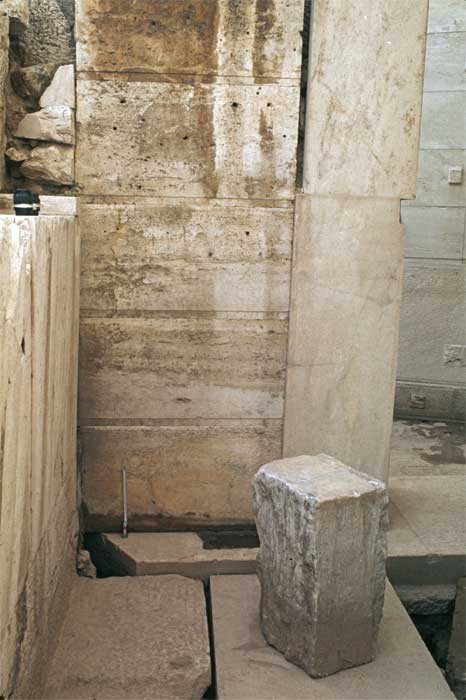 |
| |
Detailed images from the upper portion of the slide:
 |
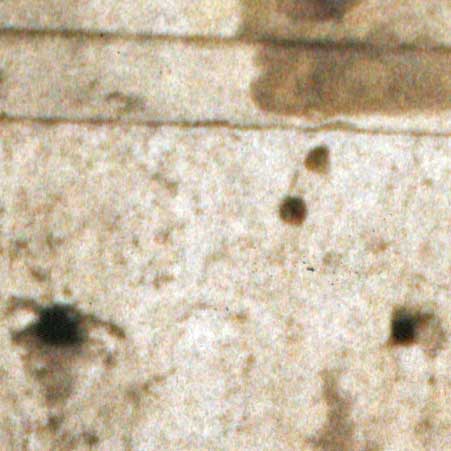 |
using Digital ICE, at 5400 d.p.i. and after adjustment in PhotoShop, at one-pixel-per-dot resolution. |
without Digital ICE, at 5400 d.p.i. and after adjustment in PhotoShop, at one-pixel-per-dot resolution. . |
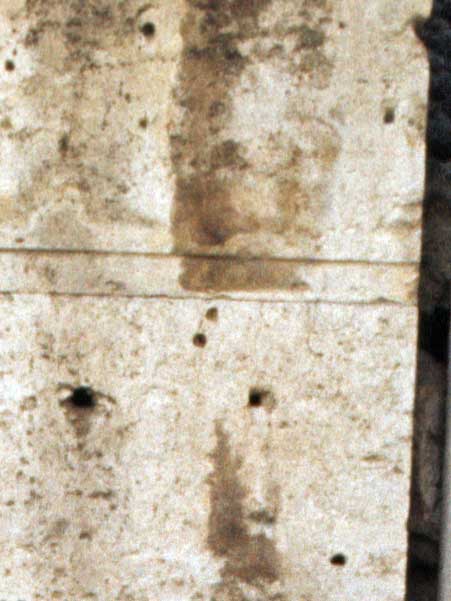 |
 |
using Digital ICE, at 2700 d.p.i. and after adjustment in PhotoShop, at one-pixel-per-dot resolution. |
without Digital ICE, at 2700 d.p.i. and after adjustment in PhotoShop, at one-pixel-per-dot resolution. . |
Detailed images from the lower portion of the slide:
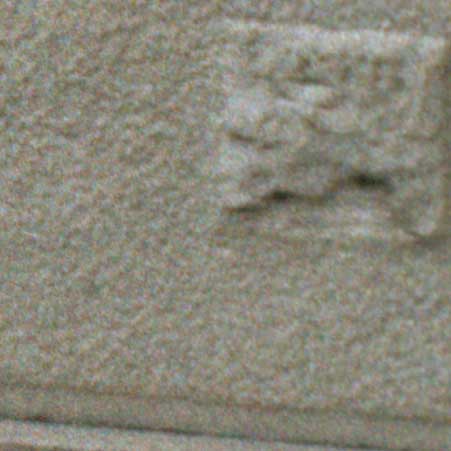 |
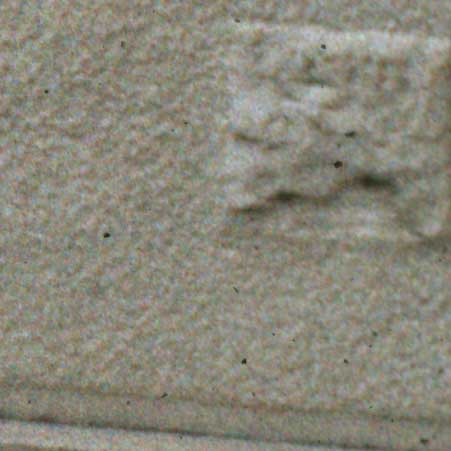 |
using Digital ICE, at 5400 d.p.i. and after adjustment in PhotoShop, at one-pixel-per-dot resolution. |
without Digital ICE, at 5400 d.p.i. and after adjustment in PhotoShop, at one-pixel-per-dot resolution. . |
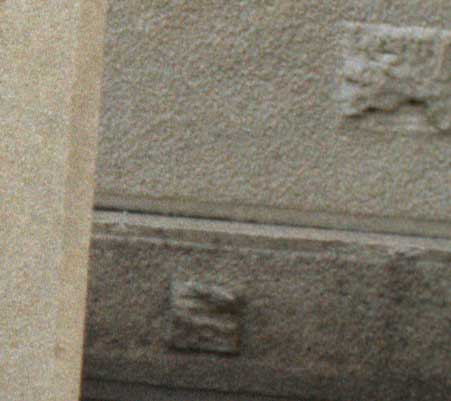 |
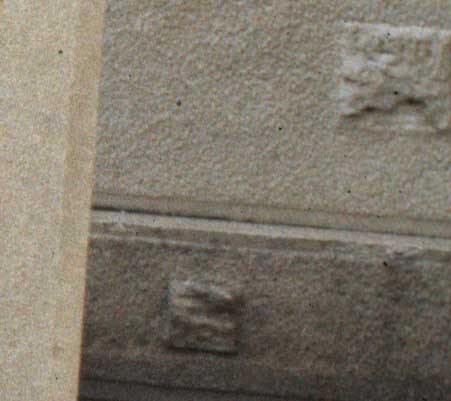 |
using Digital ICE, at 2700 d.p.i. and after adjustment in PhotoShop, at one-pixel-per-dot resolution. |
without Digital ICE, at 2700 d.p.i. and after adjustment in PhotoShop, at one-pixel-per-dot resolution. . |
These images, like the previous ones, seem to me to be indistinguishable in the sense that the ones produced with Digital ICE are equivalent to those produced without.
I found a blemish in the Kodachrome slide of the frieze detail, in the sky background not included in the cropped images. Knowing where the blemish was, I could find it on the slide, but only with an 8x loupe and directional lighting. In this instance it did no harm (and could be removed in PhotoShop). More blemishes are very visible on the Ektachrome images. That may simply reflect its greater age, since the Ektachrome slide dates from 1975 whereas the Kodachrome slide is from 1998.
Removing blemishes from images with a photo editing program is time-consuming, naturally more time consuming as the images have more blemishes and as the blemishes occur in spots difficult to fix. More important, how does one know which spots are blemishes cause by dust, dirt, scratches, etc.? How does one distinguish between such blemishes and marks on the blocks, distant birds in the sky, or cracks? A quick search of the scans of the older propylon image turned up one such real-world blemish that seemed to be a slide blemish, but Digital ICE did not recognized it as a dirt spec and left it in place. (See. Figs. 19 & 20, to the right of the lower lifting boss.)
There remains a question, not broached in the last article, about the use of an automated technology to alter an image if the result is to be an archival image. If a Digital-ICE-aided scan of a slide does not reflect the slide as it exists at the time of scanning, is that appropriate? I believe it is, because it can be so difficult to distinguish between blemishes, dust, fingerprints, and so on and actual marks that are part of the image. In extreme cases, when the slide has been badly damaged, however, it may be prudent to scan without Digital ICE as well as with it and to retain both images for future reference. In such a case, of course, documentation is required to distinguish the two resulting files,one scanned with and one without the use of Digital Ice. In addition, the documentation for any slide scanned with the aid of Digital Ice should include that fact, just as it should include any other information about the nature of the scan, the film, the scanner, and so on.
-- Harrison Eiteljorg, II
To send comments or questions to the author, please see our email contacts page.
1. The manual for the CSA scanner states flatly that "Digital ICE cannot be used with Kodak Kodachrome film" (p. 35 of the manual). However, there seem to be many opinions on the issue. Kodak on its website that (at http://www.asf.com/support/Scanners/FilmICE3FAQs.shtml, accessed 9/12/05) Digital ICE works with most Kodachrome slides, pointing out that there are times when problems arise, notably with underwater images. A technician from the local camera shop indicated that Digital ICE works well with Kodachrome unless the user plans to go directly to a print. Both CSA's prior experiment and the experiments described in this article show that Digital ICE worked well on the CSA test Kodachrome. Return to text.
2. Cleaning slides is neither easy nor fool-proof. I used a blown-air bulb and a camel-hair brush to clean the slides. The blown-air bulb is just a small rubber bulb that can be squeezed to force air out in a small, directed stream. The slides were reasonably clean, and looked very clean to the naked eye. Even with magnification and raking light, they looked clean, and those specks that remained seemed resistant to removal with the brush and the air.
I then tried compressed air, which can be purchased in small cans at photo stores. I have always been a bit reluctant to use compressed air, since it is very cold when released from the can and causes some condensation to form on the surface of the slide when the air stream is forceful. Although the compressed are produced slightly cleaner slides, it did not get the slides truly clean either.
The use of a liquid cleaner is recommended by some and considered likely to damage the film by others. Since the slides used for this experiment are valuable to me, I was unwilling to risk the use of one of the liquid cleaners. Return to text.
For other Newsletter articles concerning the use of electronic media in the humanities, consult the Subject index.
Table of Contents for the Fall, 2005 issue of the CSA Newsletter (Vol. XVIII, no. 2)
 Table of Contents for all CSA Newsletter issues on the Web
Table of Contents for all CSA Newsletter issues on the Web
| CSA Home Page |